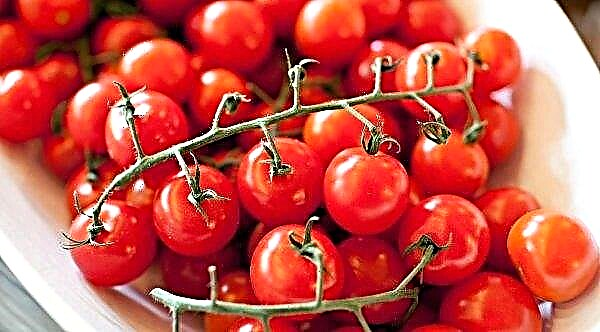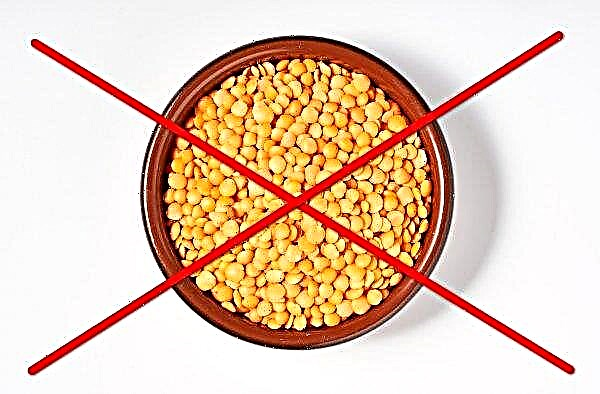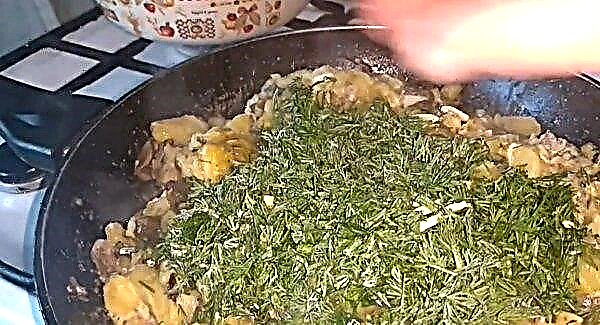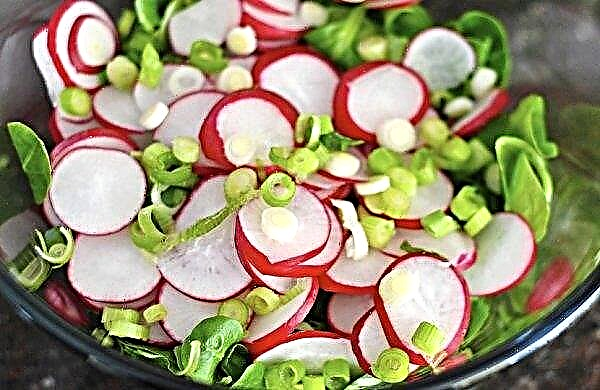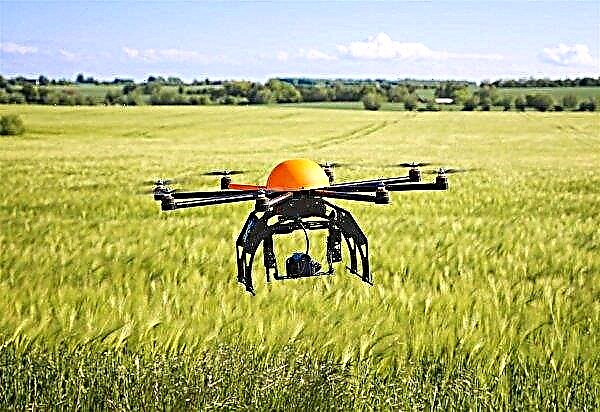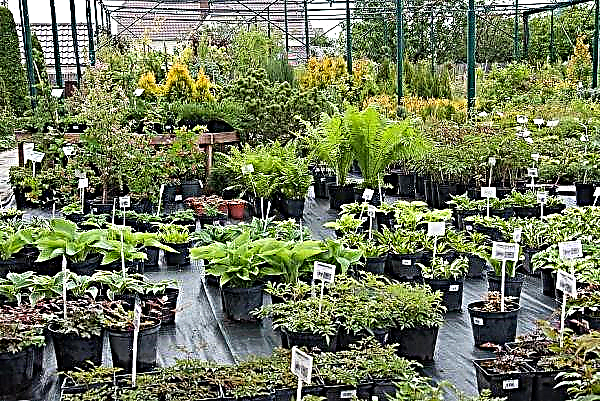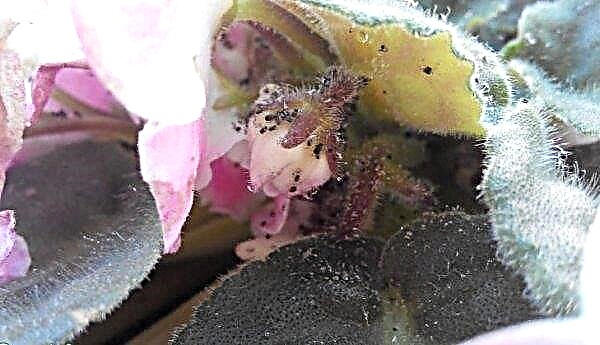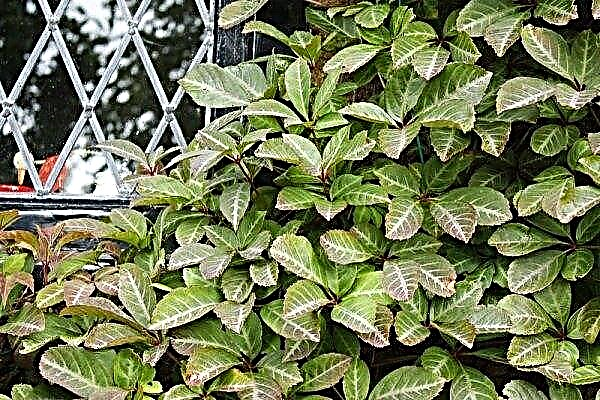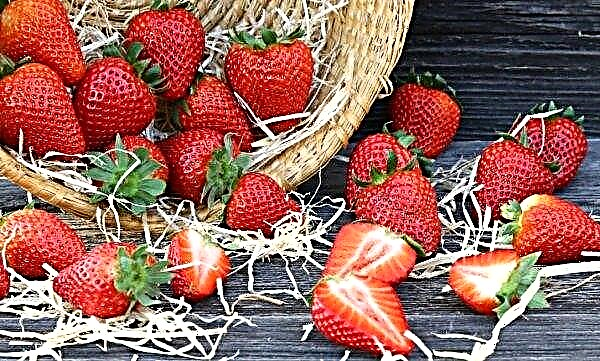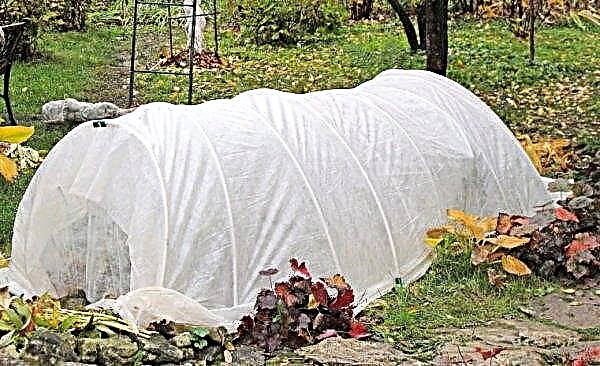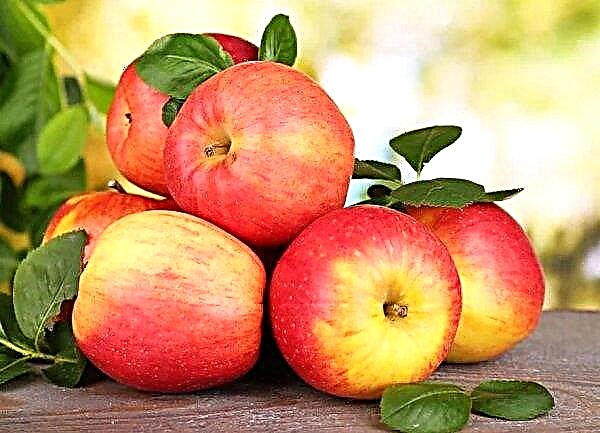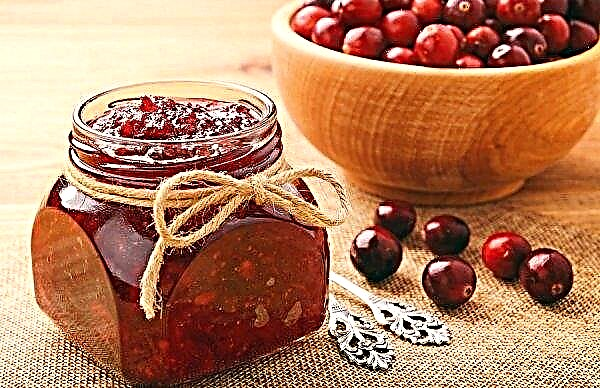True gardening lovers at their site must grow at least a few bushes of honeysuckle. Culture has many useful properties. By their value, the berries of the Yugan variety are on a par with blueberries and blueberries, and even surpasses them in some indicators. We will talk about the characteristics of the plant and its cultivation in the article.
Description of honeysuckle cultivar
The large-fruited edible honeysuckle of Yugan belongs to the early varieties. Berries ripen a month after flowering or earlier. A perennial plant is able to grow and bear fruit in any climatic zone.

Selection history
The Yugan variety was bred by Russian breeders in 2010. The originator is the Bakcharsky NIISS. The parents of the variety were Kamchatsky and Turchaninova. The hybrid incorporated only positive parental qualities.
Did you know? There is a belief that a honeysuckle bush planted near the house attracts money and good luck.
Appearance, characteristics of berries, ripening time, yield
The bush is medium-sized, hemispherical, 1.5–2 m high, its crown diameter is 2 m. The bush is not sprawling, medium-dense. The leaves are large, dark green, their surface is smooth, glossy, on the back there is a slight pubescence.

Description of the fruit:
- the mass of berries is 1.4–2 g;
- pitcher-shaped form with a roller at the apex;
- the color is dark purple;
- glossy surface;
- dessert taste, sweet and sour;
- tasting score - 4.9 out of 5.
The chemical composition of honeysuckle is characterized by a high content of fiber, vitamins C, K, group B, micro and macro elements - these are potassium, calcium, magnesium, sodium, phosphorus and iron. Productivity is high - 3.5-6 kg. Culture begins to bear fruit in mid-June.
Video: Hugo Honeysuckle
Advantages and disadvantages
The honeysuckle cultivar Ugan has its pros and cons.
- Among the benefits of culture:
- early ripening;
- high winter hardiness;
- unpretentiousness in cultivation;
- large-fruited variety;
- resistance to disease and pest attack.
- The disadvantages include:
- self-infertility;
- non-simultaneous ripening.
Agricultural technology
Despite the relative unpretentiousness, honeysuckle requires compliance with certain rules of planting and care. If you decide to plant a variety on your site, you need to be responsive to the choice of material and place of planting.
Did you know? From the second decade of summer, honeysuckle is already beginning to prepare for the cold season: it can change the color of leaves and partially discard them.
Seat selection
Honeysuckle is a photophilous and hygrophilous plant, consider this when choosing a site for planting. Best bush takes root on loamy or sandy loam soil. It does not tolerate strong winds and drafts.

Landing and care
Gardeners advise starting planting by the beginning of autumn. It is recommended to plant bushes of honeysuckle at a distance of 2 m, and the distance between the rows should be about 2.5 m Land preparation for landing is done in advance. To do this, loosen the soil and enrich it with organic or mineral fertilizers.
Important! The planted seedling should have a well-developed root system.
Landing Algorithm:
- Dig holes with a diameter of 40 cm.
- Form a mound of nutrient soil at the bottom.
- Place a sapling on the mound, then carefully pour over water.
- The hole is covered with earth. The root neck should be deepened by 3-5 cm.
- Mulch the soil with organic material.

Yugana is a moisture-loving variety that requires regular watering, especially in hot and dry weather. The soil should be moistened to a depth of 15–20 cm. Do not forget to remove dried shoots and weeds. The following dressings are recommended:
- In March, ammonium nitrate or urea is added.
- For summer feeding, use a mixture of manure with water in a ratio of 1: 4.
- In autumn, the bush is fed with ash, compost, double superphosphate
Pollination Features
Yugana is a self-infertile plant. This means that the flowers are not pollinated by their own pollen, they need pollen from a flower of another plant of the same species. As a pollinator are best suited:
- Giant's daughter;
- Delight;
- Bakcharsky Giant;
- Strezhevchanka.

Pest and Disease Control
Hugo Honeysuckle is relatively resistant to infections, however, it can be exposed to some viral and fungal diseases. Among the diseases can occur:
- ramulariosis;
- cercosporosis;
- tuberculosis;
- powdery mildew;
- mottling of leaves.

For prevention and treatment, spraying is carried out with insecticides - Bordeaux liquid, Fundazol, Fitosporin. For the fight, biologics such as Agrovertin and Fitoverm are used. Among pests, honeysuckle most often affects:
- leaflet;
- aphid;
- willow scale.

Cropping and shaping the crown
Pruning honeysuckle from Yugan is one of the most important aspects of its agricultural technology. Sanitary pruning can be done at any time. Anti-aging pruning is carried out either in the spring or in the autumn. All plants that have reached 6 years of age are subject to this procedure. First, only broken and dry shoots are removed. Then, old skeletal branches are removed every year. It is also recommended to remove the branches of the lower tier. It is strictly forbidden to trim the tops of the shoots of honeysuckle, because they have the main flower buds, the damage of which will significantly harm the plant and reduce its growth.
It is strictly forbidden to trim the tops of the shoots of honeysuckle, because they have the main flower buds, the damage of which will significantly harm the plant and reduce its growth.
Preparing for the winter
The plant in question is well adapted to the cold and harsh climate of the north. Honeysuckle tolerates temperatures below –50 ° C in open space.
Harvesting and transportation of the crop, shelf life of berries
Harvested in 2-3 receptions, since the variety of Yugan ripens unevenly. Berry picking is recommended in dry weather in the morning, preferably immediately in a suitable container in which the fruits will be stored for a further time.

Berries normally tolerate transportation and have a slight shelf life. The shelf life of fresh fruits is 3 days. For long-term storage of crops produce freezing or preservation.
According to gardeners, the presented dessert variety of Honeysuckle honeysuckle is very unpretentious, so even a novice summer resident will cope with its cultivation. To avoid problems, you must follow all the rules for caring for a plant described in our article.
Reviews
I tried today to Yugana. The first berries have been hanging for 2 weeks, they have already begun to dry out, but they have not acquired sugar, they are still just sour. There is no aroma. A taste of "nothing." Having tried such a variety before buying, I would not buy. The last week was mostly overcast, the previous one was very sunny.

